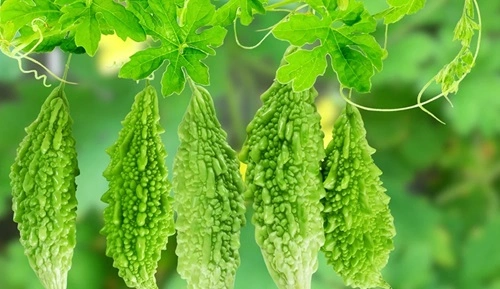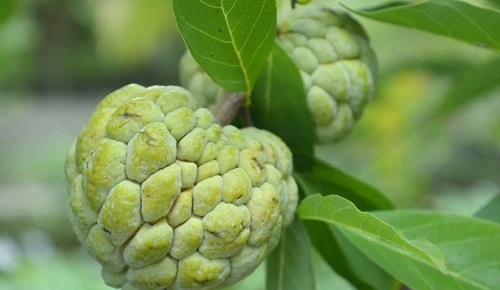Bitter gourd, commonly known as “karela”, is an important vegetable crop in India. Known for its distinct bitter flavor and numerous health benefits, bitter gourd is a rich source of vitamins A, C, and B-complex, dietary fiber, iron, and potassium. It is widely used in traditional Indian cooking and Ayurvedic medicine for its role in regulating blood sugar levels, improving digestion, and boosting immunity.
Bitter gourd thrives well in warm and humid climates and is extensively cultivated in states like Maharashtra, Tamil Nadu, Kerala, Karnataka, Uttar Pradesh, Bihar, Rajasthan, and West Bengal. Indian farmers now cultivate several high-yielding, hybrid, and disease-resistant varieties that cater to local and export markets.
This article provides a comprehensive list of more than 10 top bitter gourd varieties in India, along with their characteristics, regions of cultivation, and uses.

1. Pusa Do Mausami
Pusa Do Mausami is a popular variety developed by IARI (Indian Agricultural Research Institute), known for its high yield and quality.
- Fruit Shape: Medium-sized, spindle-shaped
- Fruit Color: Green
- Maturity: 55–60 days after sowing
- Regions: North India, Maharashtra, Tamil Nadu
- Characteristics:
- High yield with consistent fruit size
- Resistant to powdery mildew and downy mildew
- Uses: Fresh consumption, local markets
2. Coimbatore Long
Coimbatore Long is a well-known variety cultivated for its long, slender fruits and high market demand.
- Fruit Shape: Long, cylindrical
- Fruit Color: Dark green
- Maturity: 55–65 days
- Regions: Tamil Nadu, Karnataka, Andhra Pradesh
- Characteristics:
- High productivity and uniform fruit shape
- Tolerant to common pests
- Uses: Fresh vegetables, export
3. Arka Harit
Arka Harit is a hybrid variety developed by the Indian Institute of Horticultural Research (IIHR), Bangalore.
- Fruit Shape: Medium to long, spindle-shaped
- Fruit Color: Dark green with smooth skin
- Maturity: 50–55 days
- Regions: Karnataka, Maharashtra, Tamil Nadu
- Characteristics:
- Early maturity with high yield
- Resistant to downy mildew
- Uses: Fresh consumption, processed products
4. Preethi
Preethi is a high-yielding hybrid variety known for its uniform green fruits and excellent productivity.
- Fruit Shape: Medium-long, ridged
- Fruit Color: Dark green
- Maturity: 55–60 days
- Regions: Kerala, Karnataka, Tamil Nadu
- Characteristics:
- Uniform ridges and consistent fruiting
- Ideal for tropical climates
- Uses: Domestic markets, fresh consumption
5. Phule Green Gold
Phule Green Gold is a variety developed by Mahatma Phule Krishi Vidyapeeth, Maharashtra, for high yield.
- Fruit Shape: Medium-long, slender
- Fruit Color: Green
- Maturity: 55–60 days
- Regions: Maharashtra, Gujarat, Karnataka
- Characteristics:
- High yield and uniform fruit development
- Tolerant to high temperatures
- Uses: Fresh vegetables, market sales
6. Konkan Tara
Konkan Tara is a hybrid variety preferred for its disease resistance and high-quality fruits.
- Fruit Shape: Medium-sized, spindle-shaped
- Fruit Color: Light green
- Maturity: 50–55 days
- Regions: Maharashtra, Goa, Karnataka
- Characteristics:
- Resistant to viral diseases and downy mildew
- Suitable for humid climates
- Uses: Fresh consumption, processed products
7. Priya
Priya is a high-yielding hybrid variety with dark green, uniform ridged fruits.
- Fruit Shape: Long and slender
- Fruit Color: Dark green
- Maturity: 55–60 days
- Regions: Tamil Nadu, Karnataka, Kerala
- Characteristics:
- High yield and vigorous growth
- Good shelf life for market sales
- Uses: Fresh markets, export
8. Punjab Kareli
Punjab Kareli is a widely grown variety developed for high yield and adaptability to northern regions.
- Fruit Shape: Medium-sized, ridged
- Fruit Color: Green
- Maturity: 60–65 days
- Regions: Punjab, Uttar Pradesh, Haryana
- Characteristics:
- Consistent fruit production with uniform size
- Tolerant to powdery mildew
- Uses: Local markets, fresh consumption
9. US 621
US 621 is a popular hybrid variety grown for its high productivity and attractive fruits.
- Fruit Shape: Long and slender
- Fruit Color: Dark green
- Maturity: 55–60 days
- Regions: Maharashtra, Karnataka, Tamil Nadu
- Characteristics:
- High resistance to common diseases
- Uniform fruit size and shape
- Uses: Fresh vegetables, export
10. Indira
Indira is an early-maturing hybrid variety preferred for its good yield and disease resistance.
- Fruit Shape: Medium-long, smooth ridges
- Fruit Color: Green
- Maturity: 50–55 days
- Regions: Andhra Pradesh, Tamil Nadu, Karnataka
- Characteristics:
- Early maturity and consistent production
- Resistant to viral diseases
- Uses: Fresh markets, household consumption
FAQs
Q1: Which is the most popular bitter gourd variety in India?
A: Pusa Do Mausami and Coimbatore Long are among the most popular varieties due to their yield and quality.
Q2: Which variety is ideal for high yield in tropical climates?
A: Preethi, Arka Harit, and Priya are ideal for high yields in tropical climates like Kerala and Tamil Nadu.
Q3: Which bitter gourd variety is resistant to diseases?
A: Arka Harit, Konkan Tara, and Indira are resistant to common diseases like powdery mildew and viral infections.
Q4: What is the ideal climate for growing bitter gourd?
A: Bitter gourd thrives in warm and humid climates with temperatures ranging from 25°C to 30°C.
Q5: How long does it take for bitter gourd to mature?
A: Bitter gourd varieties typically mature within 50–65 days after sowing, depending on the variety and climate.
Conclusion
India’s favorable agro-climatic conditions make it suitable for cultivating a wide range of bitter gourd varieties like Pusa Do Mausami, Coimbatore Long, Arka Harit, and Preethi. With increasing demand for this nutritious vegetable in local and international markets, adopting high-yielding, disease-resistant varieties ensures better profits for farmers and contributes to food security and sustainable agriculture.

